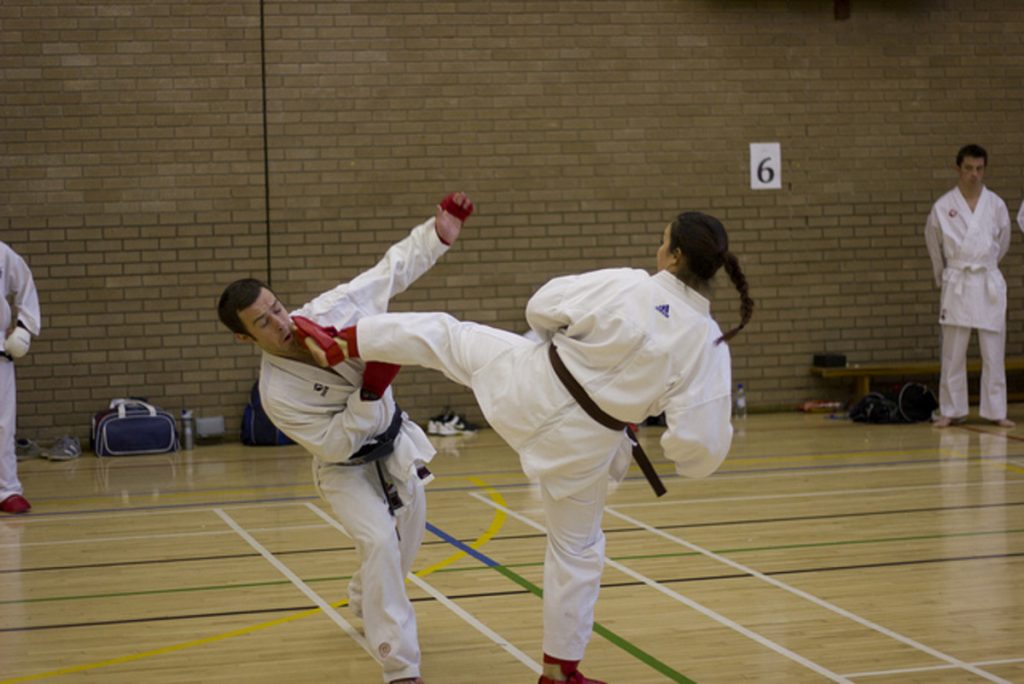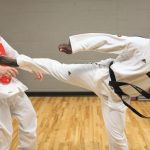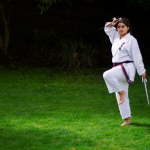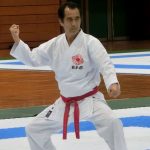Karate sparring is a form of martial arts that allows students to practice their skills in a controlled environment and test their abilities against an opponent, while also learning self-defense and discipline techniques.
It is a great way to stay active and build strength, speed, and agility while having fun at the same time.
In this article, we will discuss different types of karate sparring, including point sparring, light contact sparring, full contact sparring, and kumite (free-style) sparring.
We will also cover the benefits of karate sparring as well as safety considerations for participants.
What is Karate Sparring?
Karate sparring is a type of martial arts training that allows two or more people to practice their techniques in a controlled environment.
It involves two opponents engaging in simulated combat using various techniques such as punches, kicks, blocks, throws, sweeps, and counterattacks with the goal of either scoring points or gaining control over the other participant’s movements without causing any serious injury or harm to them.
It is important to note that there are various levels of intensity when it comes to karate sparring, depending on the skill level of the participants as well as what type they choose to engage in.
Types of Karate Sparring
There are four main types of karate sparring: point sparring, light contact sparring, full contact sparring, and kumite (free-style) sparring.
Each has its advantages and disadvantages depending on what level you are at in your martial arts training and what you hope to gain from it—whether it’s just for fun or if you have more competitive goals in mind.
Let’s take a closer look at each type now:
Point Sparring
Point sparring is considered the most basic form of karate sparring, where two opponents compete against each other by attempting to score points with various strikes such as punches or kicks without actually making contact with their opponent’s body parts.
This type of karate can be practiced by both beginners and experienced practitioners alike since it involves minimal risk of injury due to its low-contact nature.
The main goal here is for one participant to score more points than their opponent in a set amount of time by employing proper technique and strategy.
Points are usually awarded based on “clean” strikes that make contact with target areas such as the torso or head but without any physical impact being delivered.
Light Contact Sparring
Light contact karate differs from point-based sparring in that it does involve some physical impact between opponents during exchanges but is still at relatively low levels compared to full contact forms.
This type of karate can be used by both beginners looking for an introduction to the sport as well as experienced martial artists who want to refine their technique without taking too much risk while doing so.
Light contact exchanges should not cause any serious injuries but may lead to minor bruising or scrapes if proper protective gear isn’t worn during practice sessions.
Full Contact Sparring
Full contact Karate involves two opponents competing against each other using full-force strikes to land clean blows on target areas such as the torso or head area without causing serious injury or harm.
This type of fighting requires participants to wear protective gear such as helmets, mouth guards, shin pads, etc. to reduce potential injury risks associated with this type of combat sport.
Full-contact fighting should only be practiced by experienced martial artists who have mastered all aspects related to technique execution before engaging in this form due to the high-risk nature associated with it when compared with other forms mentioned previously.
Kumite (Free-Style)
Kumite is considered one step up from full-contact fighting.
It incorporates elements from multiple disciplines, including Judo/Jujitsu throws and submissions, along with traditional striking techniques used in Karate and Taekwondo.
Kumite events usually take place between advanced practitioners who have mastered all aspects related to technique execution before engaging in this form due to its high-risk nature.
Benefits Of Karate Sparring
Karate sparring offers numerous benefits for both beginners and advanced practitioners alike, regardless if they choose point-based or full-contact forms.
These include developing confidence and self-defense skills, improving coordination, refining technique execution, and building strength, speed, and agility.
It also provides an opportunity for practitioners looking for competition experience since many tournaments exist across different styles and organizations around the world.
Basic Karate Sparring Rules
Karate sparring is a great way to practice your skills and stay in shape.
It’s important to follow the rules to ensure everyone has a safe and fun experience. Basic karate sparring rules include no hitting below the belt, no kicking to the head, and no punching or kicking with full force.
Also, always wear protective gear, such as a mouthguard and gloves. Following these simple rules will help you enjoy your karate sparring experience.
Conclusion
Karate sparring is an important part of martial arts and can be a great way to test your skills and improve your technique.
There are many different types of karate sparring, each with its own unique set of rules and techniques.
Light-contact sparring is a great way to practice techniques in a safe environment, while full-contact sparring offers an intense level of competition.
Kata-based sparring is also an excellent way to practice kata applications in a controlled setting. No matter which type of karate sparring you choose, it’s important to remember that safety should always be the top priority.
With proper instruction and safety precautions, karate sparring can be an enjoyable and rewarding experience for all involved.






